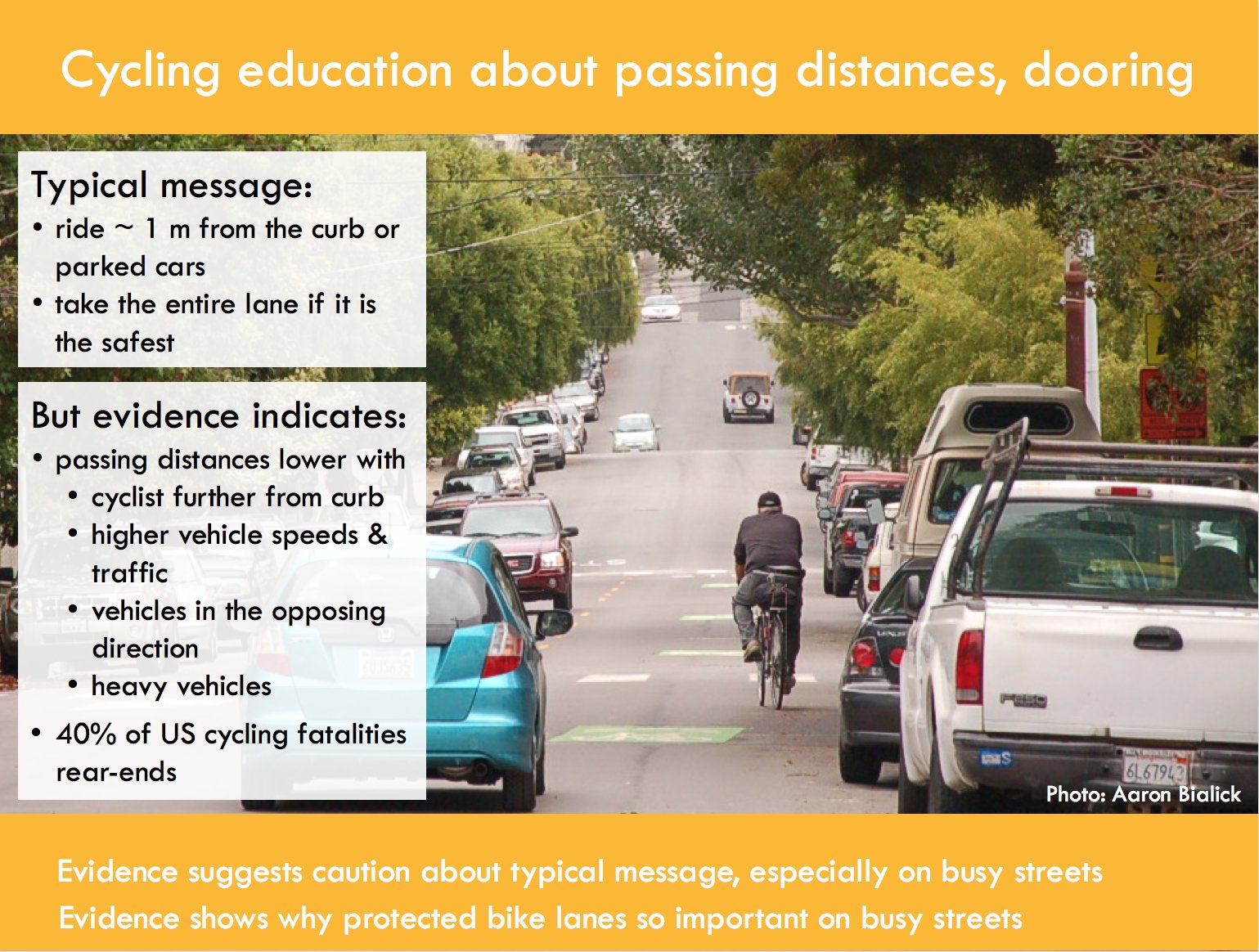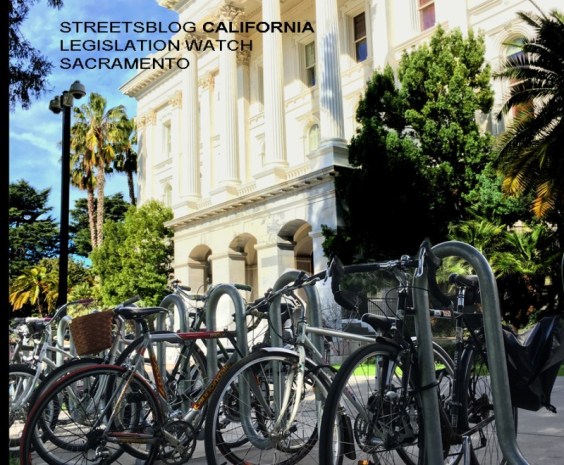Ride in the right tire track of the right hand lane. "Be predictable." Always wear a helmet. Thousands of people in North America are exposed to these rules of thumb in cycling training courses each year. But how good is the advice?
Kay Teschke, a public health professor at the University of British Columbia who specializes in bike safety issues, says she wouldn't follow some of it.
Teschke and her colleagues reviewed Canadian bike and driver education materials in a comprehensive report released in 2012 [PDF]. They found that while some of the training provided to bicyclists in Canada comports with what scientific research finds to be safe practice, some does not. And in many cases there isn't enough data to justify or disprove the guidance.
Common-sense suggestions like "behave predictably" are fine, says Teschke, but other tips don't align with what researchers have observed in real-world situations.
For example, research has consistently found that the farther bicyclists ride from the curb, the closer drivers pass them. This flies in the face of some cycling training that originates from John Forester's 1975 book Effective Cycling.
There clearly are situations where bicyclists should position themselves away from the curb, like on streets with parking lanes, where it's very important to stay out of the door zone. But in other situations, hugging the curb is safer.
In a 2007 study, Ian Walker of the University of Bath rode hundreds of kilometers wearing special equipment that measured the buffer passing motorists gave him. He found that riding farther from the curb led to being passed at closer distances. (He also found, famously, that drivers passed closer when he was wearing a helmet.)
Other research backs up Walker's finding, said Teschke, but it isn't reflected in cycling training. In Canada cyclists are told to ride away from the curb.
"When I give the talk, I say the standard Effective Cycling rules probably will work fine on neighborhood streets," Teschke said. "On a busy street, it’s not really clear that those rules are good for you."
The League of American Bicyclists, which runs the "League Certified Instructor" cycling education program, the largest in the U.S., does advise cyclists to "take the lane" in situations where there isn't enough space for safe overtaking. Andy Clarke, the former president of LAB, said that's still sound advice. But cycling education materials are definitely in need of some updating.
Clarke thinks LAB's "League Certified Instructor" training is valuable for some people, but it's not "very populist." In other words, it's designed for very aggressive riders, who are more likely to be men at the peak of their physical fitness, very much in the Forester model of riding.
LAB has been working on modernizing the curriculum in recent years, but there is still work to be done. "The link to data and actual safety stuff is pretty tenuous," Clarke said.
Forester emphasized that cyclists are most vulnerable at intersections, not from passing drivers. While it's true that intersections are especially dangerous, the risk of getting struck from behind is still substantial. A 2014 review of every cycling fatality in the U.S. by the Bike League found that 40 percent were rear-end collisions.
For some situations, says Teschke, there simply isn't enough research to draw conclusions about the safest behavior. Is it safer to signal a turn by pointing or with the traditional hand signals? That's still an area where guidance is more a matter of faith than empirical data.
Teschke wants to see more emphasis on helping people make safer route choices. Drivers tend to pass closer in heavy traffic conditions, for instance, and on roads with two-way traffic. Data suggests streets with parked cars and heavy traffic are particularly dangerous for cyclists. People who are learning to bike on streets stand to gain a lot, she says, by identifying the least risky way to get from point A to point B.





